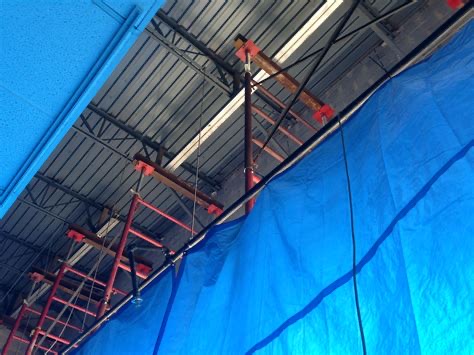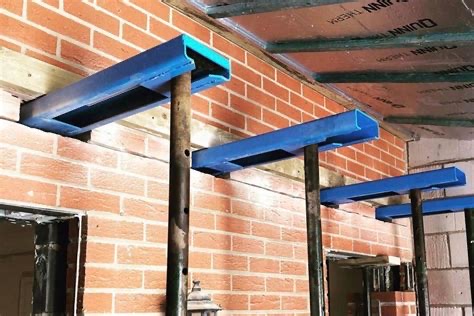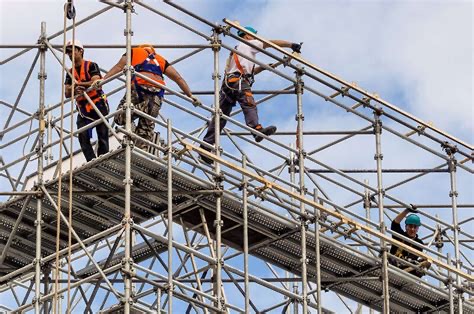Content Menu
● Introduction to Needle Beam Scaffolding
● Core Components of a Needle Beam Scaffolding System
● Assembly and Usage of Needle Beam Scaffolding
● Techniques of Cantilever Scaffolding
● Safety Measures for Needle Beam Scaffolding
● Advantages of Needle Beam Scaffolding
● Applications of Needle Beam Scaffolding
● Case Studies
>> Case Study 1: High-Rise Building Maintenance
>> Case Study 2: Bridge Construction
>> Case Study 3: Historical Building Restoration
● Enhancing Safety with Technology
● Best Practices for Sustainable Scaffolding
● Regulatory Compliance
● The Future of Needle Beam Scaffolding
● Conclusion
● FAQ
>> 1. What is the primary advantage of using needle beam scaffolding over traditional scaffolding?
>> 2. How often should needle beam scaffolds be inspected?
>> 3. What type of training is required for workers using needle beam scaffolding?
>> 4. What safety features are essential for needle beam scaffolding?
>> 5. Can needle beam scaffolding be used for both interior and exterior work?
● Citations:
Needle beam scaffolding systems are indispensable in complex construction projects, particularly when conventional ground-based scaffolding is impractical or impossible to implement[1]. This system provides a flexible, efficient, and safe way to work on elevated structures, offering excellent accessibility while keeping the ground area clear[1]. This article delves into the intricacies of needle beam scaffolding systems, covering their components, assembly, usage, safety measures, and applications, and provides a comprehensive guide for construction professionals.

Introduction to Needle Beam Scaffolding
A needle beam scaffolding system is a type of supported scaffold that relies on horizontal beams, known as needles, to provide a working platform[1][4]. These needles are inserted through openings in a building's wall or anchored to its structure, acting as the primary support for the scaffold[1]. This setup is particularly useful when the ground below is inaccessible or unsuitable for traditional scaffolding[1].
Core Components of a Needle Beam Scaffolding System
Understanding the components of a needle beam scaffolding system is crucial for ensuring its safe and effective application[1]:
1. Needles: These are horizontal beams, typically made of steel or timber, that are inserted through openings in the wall or anchored to the building structure. They serve as the primary support for the scaffold[1].
2. Supporting Beams: Additional beams provide extra support to the needles, usually placed perpendicular to them and securely attached[1].
3. Standards (Vertical Posts): Vertical components extend downward from the needles, transferring the load from the working platform to the needles[1].
4. Ledgers: Horizontal members that connect the standards, providing additional stability and support for the platform[1].
5. Transoms: These are placed at right angles to the ledgers, forming the framework for the working platform[1].
6. Working Platform: Planks or platforms laid across the transoms create a stable working surface[1].
7. Guardrails and Toe Boards: Safety features installed around the working platform to prevent falls and protect materials from dropping[1].
Assembly and Usage of Needle Beam Scaffolding
The assembly of a needle beam scaffold involves several key steps to ensure structural integrity and safety[1]:
1. Identify Anchor Points: Select strong, secure points on the building structure to anchor the needles, ensuring the structure can support the scaffold's weight and load[1].
2. Install Needles: Insert needles through openings in the wall or securely fasten them to the structure, ensuring they are level and securely attached[1].
3. Attach Supporting Beams: Position supporting beams perpendicular to the needles and securely attach them to provide additional support[1].
4. Standard Placement: Attach the standards to the needles, ensuring they are vertically aligned and securely fastened[1].
5. Ledger and Transom Installation: Connect ledgers horizontally between the standards and place transoms at right angles to the ledgers to form the platform framework[1].
6. Platform Installation: Lay planks or platforms across the transoms to create the working surface, ensuring they are securely positioned and level[1].
7. Guardrails and Toe Boards: Install guardrails and midrails around the working platform for safety and attach toe boards to prevent materials from falling off[1].
8. Inspection and Adjustment: Inspect the scaffold thoroughly before use to ensure all components are secure and stable, adjusting as necessary to ensure it is level and properly aligned[1].
Techniques of Cantilever Scaffolding
Several techniques enhance the functionality and safety of cantilever scaffolding[4]:
1. Horizontal Extension: Allows the platform to extend away from the building, supported by beams and frames, which is useful when the base area cannot be erected[4].
2. Needle Beams: Horizontal beams that support the scaffolding structure, placed through holes in the walls or secured around columns, distributing loads back to the main structure[4].
3. Counterweights: Placed on the opposite sides of the needle beams inside the structures to prevent tipping and balance the load[4].
4. Bracing: Diagonal supports placed between standards and horizontal extensions to increase stability and evenly distribute the load, preventing collapse in windy conditions[4].
5. Anchoring: Securely attaching the scaffold to the building to prevent collapse and movement, ensuring the structure's stability[4].
Safety Measures for Needle Beam Scaffolding
Safety is paramount when using needle beam scaffolding[1]:
- Proper Training: Workers must be trained in scaffold assembly, use, and safety[1].
- Regular Inspections: Scaffolds should be inspected regularly for damage, wear, and stability[1].
- Secure Attachment: Needles and supporting beams must be securely attached to the building structure[1].
- Load Capacity: Ensure the scaffold is not overloaded with workers and materials beyond its rated capacity[1].
- Use of Safety Features: Always install guardrails, midrails, toe boards, and other necessary safety components[1].

Advantages of Needle Beam Scaffolding
Needle beam scaffolding offers several advantages[1]:
- Accessibility: Provides access to areas that are difficult to reach with traditional scaffolding[1].
- Flexibility: Can be adapted to various construction needs and project requirements[1].
- Efficiency: Allows work to proceed without obstructing the ground area[1].
- Safety: When properly assembled and used, it provides a safe working environment[1].
Applications of Needle Beam Scaffolding
Needle beam scaffolding is used in a variety of construction scenarios[1]:
- Exterior Building Maintenance: Ideal for painting, repairs, and cleaning on building exteriors[1].
- Window Installation: Provides a stable platform for installing and maintaining windows[1].
- Complex Construction Projects: Suitable for projects where ground access is limited or restricted[1].
- High-Rise Construction: Ensures safety and efficiency in high-rise construction and maintenance[1].
Case Studies
Case Study 1: High-Rise Building Maintenance
In a recent project involving the maintenance of a high-rise building in downtown Manhattan, needle beam scaffolding was employed to facilitate façade repairs. Traditional scaffolding methods were deemed impractical due to the building's height and the presence of pedestrian traffic at ground level. The needle beam system allowed workers to access the building's exterior safely and efficiently, minimizing disruption to street activities.
Case Study 2: Bridge Construction
During the construction of a bridge over a busy waterway, needle beam scaffolding was utilized to provide support for the formwork used in casting concrete piers. The system allowed construction crews to work directly above the water without obstructing navigation channels. The flexibility of the needle beam system enabled precise alignment and secure placement of the formwork, ensuring the structural integrity of the bridge piers.
Case Study 3: Historical Building Restoration
In the restoration of a historical building with delicate architectural features, needle beam scaffolding was chosen to minimize stress on the structure. Unlike traditional scaffolding, which would have required extensive anchoring and potential damage to the building's façade, the needle beam system distributed the load evenly, preserving the building's integrity while providing safe access for restoration work.
Enhancing Safety with Technology
Advancements in technology have further enhanced the safety and efficiency of needle beam scaffolding systems. Wireless sensors can now be integrated into the scaffolding structure to monitor load distribution, structural integrity, and environmental conditions such as wind speed and temperature. These sensors provide real-time data to site managers, allowing them to make informed decisions and take proactive measures to prevent accidents.
Additionally, drone technology can be used for visual inspections of the scaffolding structure, identifying potential issues such as loose connections, corrosion, or material fatigue. Drones equipped with high-resolution cameras can capture detailed images and videos, enabling inspectors to assess the condition of the scaffolding from a safe distance, reducing the need for manual inspections in hazardous areas.
Best Practices for Sustainable Scaffolding
As the construction industry increasingly focuses on sustainability, it's essential to consider the environmental impact of scaffolding systems. Needle beam scaffolding can be made more sustainable by using eco-friendly materials such as bamboo or recycled steel. These materials reduce the carbon footprint of the scaffolding system and minimize waste.
Additionally, implementing efficient waste management practices during scaffold assembly and disassembly can further enhance sustainability. Recycling scaffolding components, such as metal beams and planks, reduces the demand for new materials and minimizes landfill waste.
Regulatory Compliance
Compliance with regulatory standards is essential for ensuring the safety and legality of needle beam scaffolding operations. Construction companies must adhere to local, state, and federal regulations governing scaffold design, assembly, inspection, and use. These regulations often specify requirements for structural stability, load-bearing capacity, fall protection, and worker training.
Regular audits and inspections by qualified professionals can help ensure compliance with regulatory standards and identify potential hazards. By prioritizing regulatory compliance, construction companies can minimize the risk of accidents, injuries, and legal liabilities.
The Future of Needle Beam Scaffolding
As construction technology continues to evolve, needle beam scaffolding systems are likely to become even more sophisticated and versatile. Innovations such as modular scaffolding components, automated assembly systems, and virtual reality training programs are poised to transform the industry, making scaffolding operations safer, more efficient, and more sustainable.
Conclusion
Needle beam scaffolding systems are a critical component in complex construction projects, offering a blend of flexibility, efficiency, and safety. Understanding the components, assembly, usage, and safety measures associated with these systems is essential for construction professionals. By adhering to best practices and safety guidelines, needle beam scaffolding can significantly enhance the success and safety of various construction endeavors.

FAQ
1. What is the primary advantage of using needle beam scaffolding over traditional scaffolding?
Needle beam scaffolding provides access to areas that are difficult to reach with traditional scaffolding, offering greater flexibility and efficiency in complex construction scenarios[1].
2. How often should needle beam scaffolds be inspected?
Needle beam scaffolds should be inspected regularly for damage, wear, and stability to ensure a safe working environment[1].
3. What type of training is required for workers using needle beam scaffolding?
Workers must be trained in scaffold assembly, use, and safety to prevent accidents and ensure proper usage[1].
4. What safety features are essential for needle beam scaffolding?
Essential safety features include guardrails, midrails, toe boards, and personal fall arrest systems to prevent falls and protect workers[1].
5. Can needle beam scaffolding be used for both interior and exterior work?
Yes, needle beam scaffolding can be adapted for both interior and exterior work, providing versatile solutions for various construction needs[1].
Citations:
[1] https://consca.world/categories/suspended-scaffolds
[2] https://www.youtube.com/watch?v=zrcO-lvHV6g
[3] https://baike.baidu.com/item/%E5%9C%9F%E6%9C%A8%E5%B7%A5%E7%A8%8B%E4%B8%93%E4%B8%9A%E8%8B%B1%E8%AF%AD/14075869
[4] https://www.scaxa.ae/scaffolding/types/cantilever/
[5] https://www.superiorscaffold.com/superior-scaffold-shoring-up-the-mid-atlantic/
[6] https://www.cnblogs.com/luohenyueji/p/16990846.html
[7] https://www.avontus.com/scaffolding-encyclopedia/twelve-common-types-of-scaffolding-in-construction/
[8] https://www.youtube.com/watch?v=2ka4Nl-B_QA






















